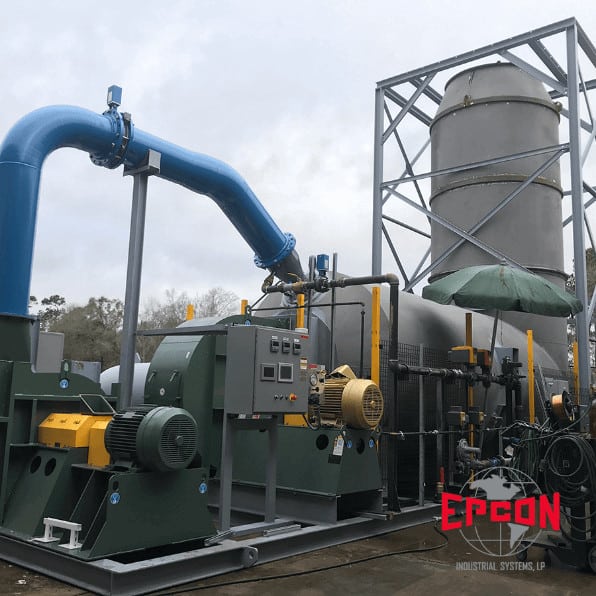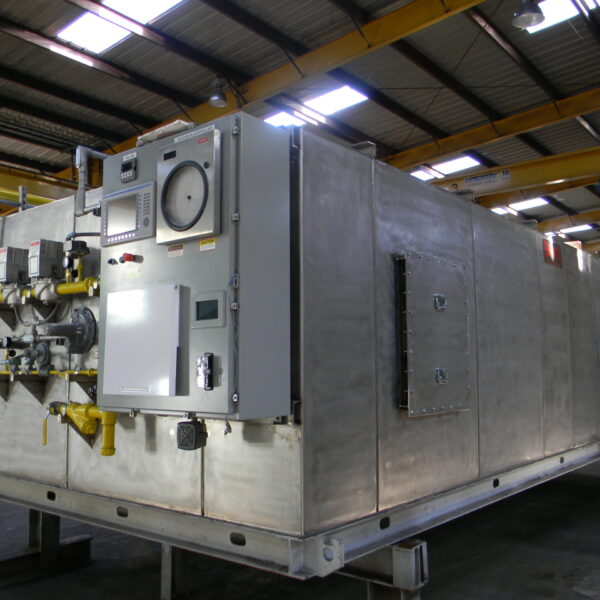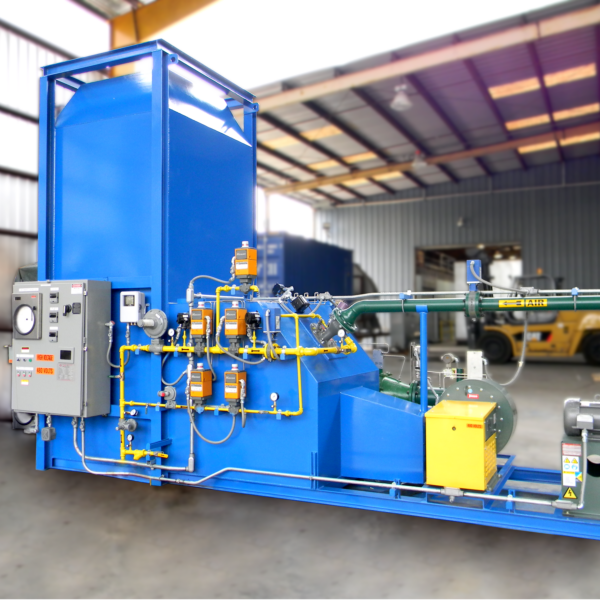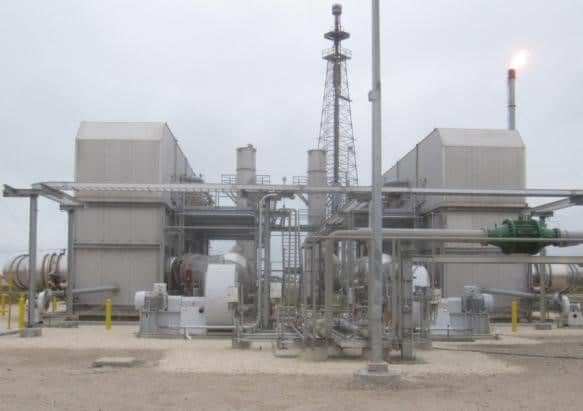Coil Coating Line with Regenerative Thermal Oxidizer and Multistage Heat Recovery
- Home
- Case Studies
- Coil Coating Line with Regenerative Thermal Oxidizer and Multistage Heat Recovery
Coil Coating Line with Regenerative Thermal Oxidizer and Multistage Heat Recovery
The Challenge
A Coil Coating operation utilized an old direct-fired afterburner and a portion of the exhausts gas to heat a 100’ long curing oven, operating at line speeds up to 700ft/min
The Solution
Evaluating the appropriate oxidation system for a specific process stream is more challenging and requires in depth analysis of the specific process gas and operating parameters, as there are many configurations to choose from. A Direct Fired Afterburner, sometimes called an incinerator, is the most elementary system, as it contains no heat recovery system. Ideal for high VOC levels and fluctuating operating conditions. Thermal oxidizers are more sophisticated systems with a variety of heat recovery systems and configurations, typically used for larger process air flows.
Regenerative system, which use media to absorb and transfer heat, was selected for this application. In addition they are not steady-state, Instead they rely on a cycling gas, which flows between at least two fixed packed beds, with at least one bed acting as an inlet while the other an outlet bed, with a common combustion/retention chamber connecting the two. The hot air from the combustion chamber flows through one of the beds, heating it up, while the other discharges, alternating in continuous cycle of retention and purging. Regenerative systems can handle a range of process flow rates, and typically yield a thermal energy recovery efficiency between 80% and 95%+.
While Primary heat exchangers are used only for treating the immediate process streams, Secondary heat exchangers are utilized to provide process heat to be used in various capacities in the manufacturing facilities. Secondary heat exchange systems use the waste heat from the combustion process to run other parallel production processes throughout the manufacturing facility, such as ovens, furnaces, and general comfort heating.
For this design, both Primary and Secondary Heat Exchangers were incorporated into a unique system application. In these combination units, the gas leaving the oxidizer will generally heat a primary or pre-heat exchanger, then it will continue on to the secondary heat exchanger. The remaining heat will be used in the secondary exchanger in a manner specified to the particular external device, and then will release the air to the atmosphere.
The Results
The old system with the DTFO used 40 million BTUs per hour. The new 45000 SCFM Regenerative Thermal Oxidizer with primary and secondary heat exchangers resulted in a fuel consumption of 16 million BTUs per hour. A savings of 24 million BTUs per hour. That translates into 210 Billion BTUs saved annually.






